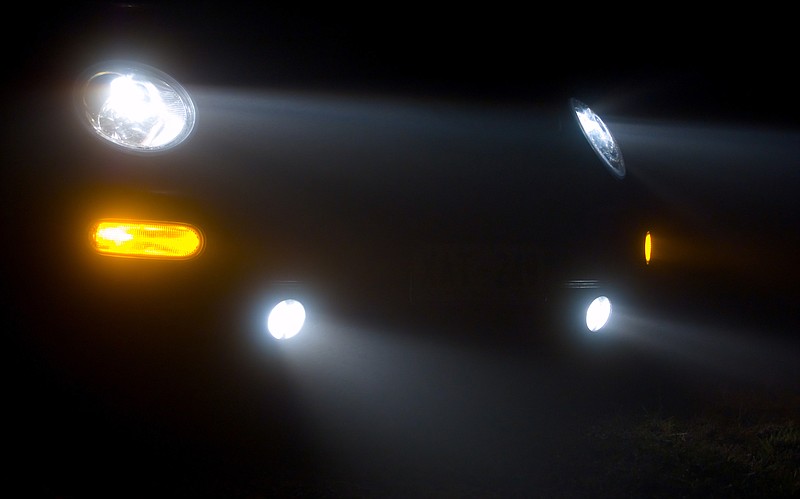Q: We have a 2017 Nissan Altima and are trying to figure out how to adjust the low beams. We replaced the entire headlight assembly on our 2007 Toyota Highlander and were able to adjust the beams without a special tool. However, all online searches for the Nissan indicate the car has to be taken to the dealership for adjustment. Can you help with instructions on how this could be done at home? - Steve and Cindy
A: Adjusting your headlight housings for proper alignment is possible at home if you can find a long, truly level area with a vertical screen such as a garage door. (Note: Truly level pavement is hard to find!)
Here are Nissan's recommendations before any inspection/adjustment is performed:
Remove any cargo; make sure spare tire and jack are properly stowed; fill the fuel tank; set tire pressure to the specified value; bounce the front and rear of the vehicle to settle it; set the front wheels straight; add a 150-lb. driver or equivalent.
Next, measure from the ground up to the center of each low beam headlight bulb and transpose this height to the screen using a horizontal stripe of masking tape. Add two additional horizontal tape lines at { inch and 2 inches below the headlight height.
A more generic method is to drive up as close as possible to the screen and mark a horizontal and vertical line with masking tape where the center of the low beam light strikes the screen (easier and possibly more accurate). The Altima is then backed up 33 feet from the screen (this distance varies between car makes). Block one headlight alternately with cardboard or a towel and observe where the remaining beam strikes the screen. The most intense projected spot should fall between the two lower marks (very slightly downward from level).
Vertical adjustment is possible via a screw down low on the back side of the housing, roughly centered between the two lamp sockets (screwdriver comes down vertically to meet the screw). Horizontal adjustment is not possible.
I should mention that states may have differing alignment specs, and some headlight housings contain a bubble level, which is typically centered as the car is parked on a level surface.
Q: I sometimes hear a roaring sound from my truck's engine when climbing a long steep hill during warm weather. What is it? - Colin
A: Most likely you are hearing your thermostatic fan clutch engage. Vehicles with longitudinal engines and a mechanical fan are typically equipped with a fan clutch, allowing the fan blades to lumber along at reduced rotational speed during normal driving. This reduces load on the engine and saves fuel (a large/aggressive fan can require as much as 30 horsepower to turn it at high speed when directly coupled).
When climbing or pulling hard, and the engine temperature rises to perhaps 220 F, the fan clutch engages, eliminating any fan blade slippage. The roar you hear is the fan really taking care of business! As temperature drops, the clutch will release and allow the fan to fall back to a normal pace.
Brad Bergholdt is an automotive technology instructor at Evergreen Valley College in San Jose, Calif. Readers may send him email at [email protected]; he cannot make personal replies.

